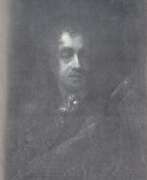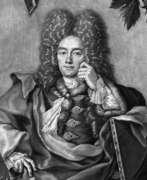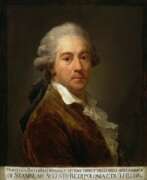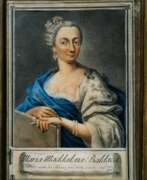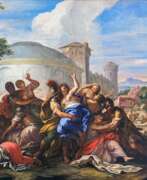Artists 18th century


Fyodor Yakovlevich Alekseyev (Russian: Фёдор Яковлевич Алексеев) was a Russian painter born around 1753 in Saint Petersburg. Known as the "Russian Canaletto" for his masterful vedute, or detailed paintings of cityscapes, Alekseyev made significant contributions to Russian art, particularly in depicting urban landscapes.
Alekseyev was admitted to the Imperial Academy of Arts in 1764, where he initially studied ornamental sculpture and scenic painting under Antonio Peresinotti. He spent several years in Venice, funded by a fellowship, where he studied theater painting but preferred creating landscapes and copying works by old masters. Upon his return to Russia, he faced restrictions but gradually gained recognition for his independent work. His notable painting "View of the Palace Embankment from the Fortress" earned him the title of Academician in 1794.
In 1800, Tsar Paul I commissioned Alekseyev to paint the streets and architecture of Moscow, resulting in numerous significant works that highlighted the city's grandeur. Despite a decline in fame later in life, his contributions to Russian urbanscape painting remain influential, with works such as "Red Square" and "The Flood of 1824 in the square at the Bolshoi Kamenny Theatre" held in major Russian museums like the State Russian Museum and the Tretyakov Gallery.
For updates on sales and auction events related to Fyodor Yakovlevich Alekseyev, sign up for our newsletter.


Antonio Capellan was an Italian engraver, active in a Neoclassical style. He trained with Joseph Wagner. Capellan is best known for making engraved copies of masterworks of the Italian Renaissance found in private collections, which were published in Gavin Hamilton's work, Schola Italica Picturae. He also engraved a series of portraits of cardinals titled "Calcographia R.C.A. apud Pedem Marmoreum". In 1759, he engraved portraits of Michelangelo and Giorgio Vasari for a volume of the life of Vasari, curated by Bottari.


Filippo Abbiati was an Italian painter, renowned for his contribution to the Baroque period. Born in Milan in 1640, Abbiati's training under Carlo Francesco Nuvolone and Antonio Busca honed his skills, leading him to develop a distinct style characterized by fluid touch and luminous foundations. His work was heavily influenced by early seventeenth-century Lombard painting and later, the Roman Baroque and Venetian painting.
Abbiati's career was predominantly based in Milan, where he produced numerous significant religious and historical paintings. Notable works include the altarpiece of the Preaching of St. John the Baptist for the Sanctuary of the Beata Vergine dei Miracoli in Saronno and the extensive frescoes in the Milanese church of Sant'Alessandro. His masterpieces are celebrated for their dynamic composition and expressive intensity, marking a transition toward the Rococo movement.
Though details about his later years remain sparse, Abbiati's legacy lives on through his influential frescoes and the mentorship of notable students like Alessandro Magnasco. His works can still be admired in places like the Pinacoteca di Brera in Milan and the Biblioteca Ambrosiana.
For collectors and enthusiasts looking to explore the depth of Italian Baroque, Filippo Abbiati's work offers a rich narrative woven through the tapestry of art history. Sign up for updates on auctions and new discoveries related to Filippo Abbiati, ensuring you stay informed about opportunities to own a piece of this illustrious artist's legacy.


Lemuel Francis Abbott was an English portrait painter. His most famous work is the portrait of Nelson, exhibited at the residence of the British Prime Minister.
During his artistic life Abbott created many portraits of famous people of the 18th century - naval officers, literati, officials, ladies of the world. He was one of the first to portray golfers.


Michel Victor Acier was a French porcelain sculptor and model-maker who worked at the famous Saxon porcelain manufactory in Meissen from 1765 to 1779. With his work in the activities of the manufactory is associated with the period of neoclassicism. Michel-Victor was the maternal great-grandfather of the composer Pyotr Ilyich Tchaikovsky.


Johann Adam Ackermann was a German landscape painter of the early 19th century. His best-known works are his winter landscapes and watercolours. Johann Ackermann was the brother of Georg Friedrich Ackermann, who also painted landscapes but with less success.


Giacomo Adolfi was an Italian Baroque painter who worked in and around Bergamo.
Born in Bergamo, Giacomo Adolfi was the older brother of the painter Ciro Adolfi and initially trained under his father Benedetto Adolfi. He executed a number of frescoes in churches and public buildings in Bergamo, including "The Crowning of the Virgin" for the church of the Convent del Paradiso and "The Adoration of the Magi" for the church of Sant'Alessandro della Croce in Bergamo.


Ciro Adolfi was an Italian painter of the Baroque period, active in and around Bergamo.
He completed a number of fresco paintings in the churches and public buildings of Bergamo, including a Four Evangelists for the church of for Sant'Alessandro della Croce; a Deposition from the cross for Santa Maria della Grazie, and a Decollation of St. John for the parish church of Colognola.


Jacques-Laurent Agasse is a Swiss animal painter.
As a young man he studied at the veterinary school in Paris and was well versed in equine anatomy. In 1880 he moved to London and began painting dogs and racehorses, as well as exotic animals such as giraffes and zebras, which he observed in London zoos. Later, Agasse began to paint landscapes, portraits, and genre scenes as well.


Andrea Salvatore di Antonio Aglio was an Italian painter and sculptor who specialised in painting on marble.
Andrea Salvatore Aglio rediscovered and modified the technique known as encaustic, which allowed him to paint and reproduce works of art on marble.


Ivan Akimovich Akimov (Russian: Иван Акимович Акимов) was a Russian painter celebrated for his contributions to the Classical and Neoclassical styles of art. Born into a family of a typographer for the Governing Senate, Akimov's journey into the arts began early when, after his father's death, he penned a heartfelt letter to the Imperial Academy of Arts. This letter secured his admission, marking the start of his lifelong association with the Academy, where he evolved from a student to its director.
Akimov's education at the Academy was marked by numerous awards, including gold medals for his artworks, showcasing his burgeoning talent in painting. His artistic journey took him to Italy on a fellowship, where, despite initial challenges, he found mentorship under Pompeo Battoni and was inspired by the Venetian masters. This period was instrumental in shaping his skills and artistic outlook.
Throughout his career, Akimov was revered not just for his artistic output but also for his contributions to art education and historiography in Russia. He played a pivotal role at the St. Petersburg Academy of Arts, ultimately serving as its director. Akimov's legacy extends beyond his paintings, through his influence on future generations of artists and his foundational work in Russian art historiography. Among his notable works are "Prometheus Making a Statue at the Command of Minerva" and "The Baptism of Princess Olga in Constantinople", which reflect his classical influences and historical interests.
For those interested in exploring Ivan Akimovich Akimov's works and legacy, signing up for updates on new product sales and auction events related to Akimov could provide valuable insights and opportunities to connect with his art. This subscription ensures you stay informed about the latest discoveries and offerings in the world of Russian classical painting.


Jean-François Albanis Beaumont was a French landscape painter, engineer, traveler and geographer.
He studied engineering in Paris and worked on architectural structures at Chambérly. Beaumont later accompanied the Duke of Gloucester, William Frederick of Hanover on a grand tour of Germany, Italy, France, and Switzerland, making notes and detailed pictorial sketches of views along the way. In 1800 he published the illustrated books Journey to the Lepontine Alps from France to Italy and Description of the Grecian and Cottian Alps (1802 and 1806).


Eleazar Albin was a British naturalist and author of illustrated books on birds and insects.
Albin wrote and illustrated a number of books, including A Natural History of English Insects (1720), A Natural History of Birds (1731-38), and A Natural History of Spiders and Other Curious Insects (1736). His work was based on careful observation and artistic talent. Eleazar Albin has been called one of the "great illustrators of entomological books of the 18th century".
Some of the illustrations in these books are by Albin's daughter Elisabeth. Eleazar Albin himself proudly wrote of his drawings that they were all painted from life, with all the accuracy of a sketch, unlike the sketches of other scientists, who did them either from memory or from stories.


Balthasar Augustin Albrecht was a German painter of the first half of the 18th century. He is known as a painter who worked in portrait, historical and religious genres.
Albrecht began his career in 1719. He was appointed court painter at the court of the Elector of Bavaria and inspector-custodian of the Picture Gallery in Munich. In addition to portraits and paintings, he created frescoes and altarpieces in churches in Munich and other German cities.




Tommaso Aldrovandini was an Italian painter of the Baroque period. He mainly painted perspective views and architectural subjects (quadratura), in which the figures were painted by Marcantonio Franceschini and Carlo Cignani. He decorated churches, palaces, and theaters in Forlì, Verona, Venice, Parma, Turin, Ferrara, and Genoa, and especially in his native Bologna. Among his pupils was Giovanni Benedetto Paolazzi.




William Alexander was a British painter, illustrator and printmaker.
He studied painting at the Royal Academy and became a very famous artist. In 1792-1794 he accompanied the official embassy to Peking of Lord George Macartney on behalf of the British government, where he documented the visit and made many drawings of the Chinese court. These depict various mandarins, merchants, members of the royal family and members of Chinese society. In 1805, William Alexander published Costume of China, an album illustrated with 48 color prints, which was a success with the public.


Samuel Alken the Elder was a British painter, printmaker and illustrator.
Samuel Alken studied at the Royal Academy School in London. In 1779 he published A New Book of Ornaments Designed and Engraved by Samuel Alken, and later established himself as one of the most distinguished engravers in the new technique of aquatint. Alken produced magnificent compositions of the British countryside, including moonlit night scenes. His works include engravings by George Morland, Richard Wilson, Thomas Rowlandson, and Francis Wheatley. In 1796 his plates of sixteen views of the lakes of Cumberland and Westmorland, after drawings by John Ames and John Smith, were published, and in 1798 a set of aquatint views of North Wales after drawings by the Rev. Brian Broughton.
His sons, Samuel Alken the Younger (1784-1824), Henry Thomas Alken (1785-1851) and Samuel Henry Alken (1810-1894) also became artists.
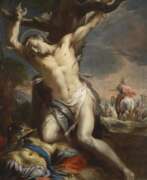

Martino Altomonte, born Johann Martin Hohenberg, was an Italian Baroque painter renowned for his artistic endeavors across Poland and Austria. With his roots in a family of artists, Altomonte honed his craft under the tutelage of Giovanni Battista Gaulli and Carlo Maratta in Rome, before making a significant name change and cultural shift to become a court painter in Poland under King John III Sobieski.
Martino Altomonte's oeuvre is marked by a vibrant blend of Neapolitan chiaroscuro and Venetian color, elements that distinguished his style from his contemporaries. This unique combination is particularly evident in his altarpieces and frescoes, which include major works like the ceiling frescoes in Vienna's Lower Belvedere and the high altarpiece at the Stiftskirche Wilhering. Despite the loss of many of his altarpieces, some key pieces survive, offering a glimpse into his dramatic yet harmonious approach.
Throughout his career, Martino Altomonte was deeply involved in the Viennese art scene, his works contributing significantly to the development of Baroque painting in the region. His legacy is continued by his son, Bartolomeo Altomonte, who also became a noted painter. Martino Altomonte's impact on Baroque painting, with his mastery of light and shadow, makes his work a continued point of study and appreciation among art collectors and historians.
For those interested in exploring the works and life of Martino Altomonte further, consider subscribing for updates on new product sales and auction events featuring this illustrious artist. Stay connected to the world of art and ensure you never miss an opportunity to own a piece of Baroque brilliance.
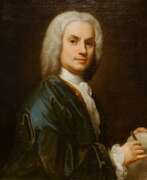

Jacopo Amigoni, also named Giacomo Amiconi, was an Italian painter of the late-Baroque or Rococo period, who began his career in Venice, but traveled and was prolific throughout Europe, where his sumptuous portraits were much in demand.


Antonio Amorosi was an Italian painter of the late Baroque period.
Amorosi studied in Rome in the studio of Giuseppe Ghezzi. He produced portraits and religious works, but he is best known for his genre paintings of bambocanti. The artist has a keen eye for the everyday lives of ordinary people, particularly children, whose world he depicts in a gentle and delicate manner. Among Amorosi's most characteristic and best works are "Boy with a Glass" and "Boy with a Dog", preserved in the Pinacoteca Comunale in Deruta.


Pieter Angellis, also known as Pieter van Angellis, Peter van Angellis or Peter Angelles, was a French-born painter. He worked in Flanders, Germany, Italy, England, and France and is known for his landscapes and genre paintings of urban life. Angelles was a member of the Guild of St. Luke in Antwerp and Düsseldorf.


Alexei Petrovich Antropov (Russian: Алексей Петрович Антропов), a prominent Russian painter of the Baroque period, is celebrated for his significant contributions to art, particularly in portrait painting and church frescoing. Born into a family connected to the governmental sphere, Antropov's early exposure to the arts came through his work in the Chancellory of Buildings, where he began his career under the guidance of various Russian and foreign artists, including Andrey Matveyev and Ivan Vishnyakov.
Antropov's work is distinguished by his mastery in oil painting, miniatures, and icons, with a career that saw him active mainly in St. Petersburg, Moscow, and Kiev. His artistic journey was notably influenced by his studies with the French court painter Louis Caravaque and later with the Italian painter Pietro Rotari, which helped him refine his portrait artistry. The 1760s emerged as his most productive period, where he crafted numerous notable portraits, including those of Elizabeth Petrovna and Peter III of Russia, showcasing his preference for traditional icon and parsuna portrait styles characterized by sharp contrasts and dark backgrounds.
Antropov's legacy extends beyond his artworks; his dedication to art education and the community is evident in his decision to transfer his only house to the Department of Education for the establishment of a Free School. He passed away in 1795, leaving behind a rich collection of works that continue to be celebrated in museums such as the Tretyakov Gallery in Moscow and the Russian Museum in St. Petersburg.
Collectors and art experts value Antropov for his unique contributions to Russian art, his role in the transition of portrait styles, and his influence on future generations of artists, including his apprentice Dmitry Levitzky. His works, including the portraits of Catherine II and Archbishop Gavriil Petrov, are pivotal in understanding the artistic and cultural shifts of 18th-century Russia.
For those interested in exploring the depths of Russian Baroque art and the significant figures who shaped its contours, Alexei Petrovich Antropov's oeuvre offers a fascinating journey. Collectors and aficionados are encouraged to sign up for updates on new product sales and auction events related to Antropov's works, ensuring they remain informed about opportunities to own a piece of this illustrious artist's legacy. This subscription is a gateway to the vibrant world of art collection, where the beauty of the past is preserved for the future.


Francesco Faraone Aquila was an Italian engraver. In 1690 he moved to Rome where his brother Pietro had been an engraver for several decades in major workshops in the capital. Pope Clement XI gave him an order which has remained his main work - engraving the bas-reliefs of the Antoninus Pius column and its pedestal. Another important work by Francesco Aquila is the engraving of the frescoes of the dome of the Cathedral of Parma by Correggio and the painting of the Vatican chambers. Following the antique taste established in the 18th century, Aquila engraved various Roman classical works: statues, vases and triumphal arches, thus satisfying the demand of mainly foreign visitors, mainly German and English. His portraits of his contemporaries, both painters and clergymen, also enjoyed great popularity.


Nikolai Ivanovich Argunov (Russian: Николай Иванович Аргунов) was a Russian painter of the late 18th - the first third of the 19th centuries. He is known as a painter, graphic artist, miniaturist, representative of Russian classicism.
Nikolai Argunov is considered one of the greatest portrait painters of his time. His works are notable for their diversity, psychologism, objective approach to nature, devoid of classicist idealization and romantic heroization of the models.
The artist was a serf, was granted his freedom after the death of his master and became an academician of the Imperial Academy of Arts in St. Petersburg. He was a member of a dynasty of artists, the beginning of which began with his father Ivan Argunov.


Giacomo Antonio Arland was an Italian Baroque painter. At the age of 20 he travelled to Paris, where he was patronised by the Duke of Orleans. He became famous as a portrait miniaturist. In 1729 Giacomo Antonio Arland returned to Genoa as a wealthy man.
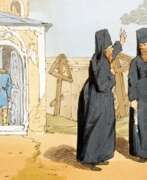

John Augustus Atkinson was a British watercolorist, illustrator and engraver.
In 1784, the young Atkinson traveled to St. Petersburg, Russia, to stay with his uncle James Walker, who worked as an engraver at the court of Empress Catherine the Great. The aspiring artist learned from the work of the great Russian painters whose paintings he saw in the art galleries of St. Petersburg. Catherine and her son Paul I, noticing his talent, commissioned Atkinson to paint pictures on historical subjects.
In 1801 Atkinson returned to England and a year later published an album entitled "Pictorial representation of Russian manners, customs and amusements" on 100 plates drawn and engraved by himself. This work was a great success in Europe. Later, during the Napoleonic Wars, Atkinson created many battle scenes, including the Battle of Waterloo and naval battles. In 1808 he was elected to the Society of Watercolor Painters.


Matteo Baccelli was an Italian painter born in Lucca, Italy. He was a pupil of Pompeo Batoni and studied at the Accademia di Belle Arti di Firenze. He specialized in portrait painting and was a well-known artist in his time, receiving many commissions from members of the aristocracy and the church.
Baccelli's portraits are characterized by their realism and attention to detail, as well as their sensitive and subtle use of color. He was particularly skilled at capturing the character and personality of his subjects, and his paintings often convey a sense of psychological depth and complexity.
Baccelli's works can be found in various museums and private collections around the world, including the Uffizi Gallery in Florence, the Pinacoteca di Brera in Milan, and the Metropolitan Museum of Art in New York. He is considered an important figure in the history of Italian painting and a representative of the neoclassical style that dominated European art in the late 18th and early 19th centuries.


Jean-Jacques Bachelier was a French painter and innovator of porcelain and a member of the Royal Academy of Painting and Sculpture.
Originally a still-life painter, he later became world-renowned for his significant contributions to applied art. In 1765, Bachelier founded an art and crafts school in Paris with his own funds. He was in charge of the painters at the porcelain manufactory in Vincennes, where figures were produced from unglazed porcelain - biscuit. For many years Bachelier was the Director of Sevres porcelain manufactory and in fact became the creator of the Sevres style.
Bachelier also conducted research on encaustic painting (a painting technique in which the binding substance of paints is wax) and published works on art education.


Elias Baeck called "Heldenmuth", was a German painter and engraver from Augsburg. Baeck worked for some time in Rome, then in Laybach, but finally returned to Augsburg, where he died in 1747. His chief works — both in painting and engraving — were portraits and landscapes. His engravings are sometimes signed "E.B.a.H.", standing for "Elias Baeck, alias Heldenmuth".


William Baillie was a British artist who lived and worked in India in the late 18th century.
He went to India in 1777 as a cadet in the Bengal Infantry and remained there for the rest of his life. After retiring, he published a newspaper in Calcutta, painted landscapes with views of the city and surrounding countryside, made engravings, and made topographical maps. In 1794, William Baillie published a set of hand-colored aquatints entitled Twelve Views of Calcutta.


Antonio Balestra, an Italian painter, is celebrated for his contributions to the Baroque art movement. Initially training in his hometown, Balestra's artistic journey took him to Venice and Rome, where he honed his skills and absorbed diverse artistic influences. By 1694, his talents were recognized with a prestigious award from the Accademia di San Luca in Rome, underscoring his growing reputation.
Antonio Balestra's works, characterized by their adherence to classical artistic standards, are found in various Italian cities, including Venice, Bologna, and Verona. He was known for his religious paintings, such as "The Miracle of Saint Nicholas" and "The Annunciation," as well as his contributions to church decorations and altarpieces.
Despite his traditional approach, Antonio Balestra's legacy is cemented in the art world, with works displayed in notable museums and his influence extending to pupils and subsequent generations of artists. His devotion to the established norms of academic painting reflected a broader dialogue within the art community about innovation versus tradition during his time.
For art collectors and enthusiasts, Antonio Balestra's works offer a glimpse into the Baroque era's rich artistic heritage, showcasing a blend of devout religiosity and meticulous craftsmanship. To stay informed about Antonio Balestra's art and related auction events, consider subscribing to updates, ensuring you remain connected to the enduring appeal of his artistic legacy.


Jean Barbault was a French painter, etcher and printmaker, who worked in Rome for most of his life. He is noted for paintings of local people, wearing traditional costumes or Oriental costumes and for his work documenting iconic Roman monuments and antiquities which were published in two volumes.


James Barenger is a British animal artist and illustrator.
He was born James Barenger Sr. James Barenger was a metal chaser and naturalist painter. Barenger specialized in depicting horses, dogs, and other animals, as well as noblemen's hunting scenes, which were consistently successful in the 19th century.
Barenger's patrons included the Duke of Grafton, the Marquis of Londonderry and the Earl of Derby. The artist produced entire series of prints depicting hunting, shooting, bullfighting and horse racing, which were published in sporting publications.


Baron Eben, full name Christian Adolph Frederick d'Eben, was a Prussian officer and artist.
Baron Eben, descended from an old Prussian family in Silesia, entered the English service in 1800 and served in the 10th Regiment of the Prince of Wales's Light Dragoons. By order of the Prince of Wales, he created a company of light cavalry in the manner of the Hungarian Hussars, composed of foreigners. He also made original drawings, which, in the form of bright aquatints by the engraver Nicholas Heideloff, were included in a 29-page manual entitled "Remarks on the Organization and Present State of the Swedish Army". Eben dedicated this work to the Prince of Wales.
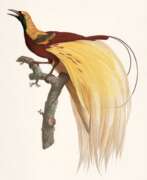

Jacques Barraband was a French zoological and botanical illustrator, renowned for his lifelike renderings of tropical birds. His pictures were based on mounted specimens and his illustration was considered the most accurate ones made during the early 1800s.


George Barret the Elder was an Irish landscape painter.
He arrived in London in 1762, and soon became known in society and became a leading painter of the period. Barret exhibited at the Society of Artists of Great Britain and gained the patronage of many art collectors. In 1768, he co-founded the Royal Academy. During his lifetime Barret painted many fine landscapes of Wales, the Lake District, the Thames, views of castles and palaces, which were much sought after by the nobility.
His son, George Barret the Younger (1767-1842), also became a landscape painter, and he may even have surpassed his father in skill.


George Barret the Younger was a British painter, master watercolorist and landscape painter.
He was the son of the Irish painter George Barret the Elder (1730-1784) and learned painting from his father. He exhibited at the Royal Academy from 1800 and was one of the first and active members of the Society of Watercolor Painters, which was formed with his own encouragement in 1804. His early works were mainly topographical landscapes in a style similar to his father's watercolors. Later he switched to more romantic compositions with imaginary landscapes.
In 1840, George Barret published The Theory and Practice of Watercolor Painting.


Pompeo Girolamo Battoni was an Italian painter who displayed a solid technical knowledge in his portrait work and in his numerous allegorical and mythological pictures. The high number of foreign visitors travelling throughout Italy and reaching Rome during their "Grand Tour" led the artist to specialize in portraits.
Batoni won international fame largely thanks to his customers, mostly British of noble origin, whom he portrayed, often with famous Italian landscapes in the background. Such Grand Tour portraits by Batoni were in British private collections, thus ensuring the genre's popularity in Great Britain. One generation later, Sir Joshua Reynolds would take up this tradition and become the leading English portrait painter. Although Batoni was considered the best Italian painter of his time, contemporary chronicles mention his rivalry with Anton Raphael Mengs.


Johann Wolfgang Baumgartner was an Austrian-German Rococo painter.
He worked as a glass painter. The ceiling painting in the Sanctuary of the Holy Cross of the former Klosters Mountains is considered as his largest and most important work.
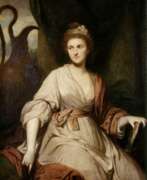

Diana Beauclerk, born Diana Spencer, was an English painter.
Diana Beauclerk was highly gifted, painting portraits, illustrating plays and books, creating designs for Wedgwood's pioneering ceramics and decorating rooms with frescoes.
























